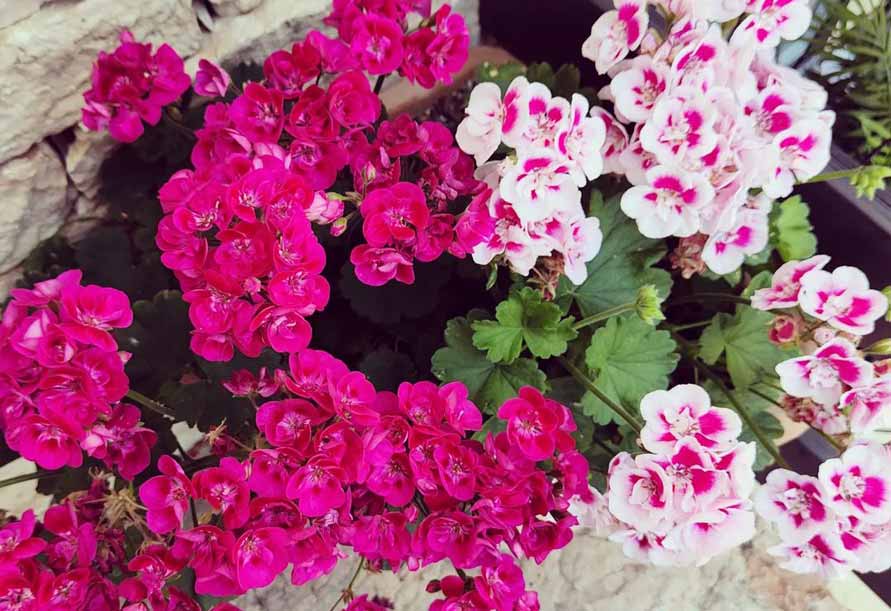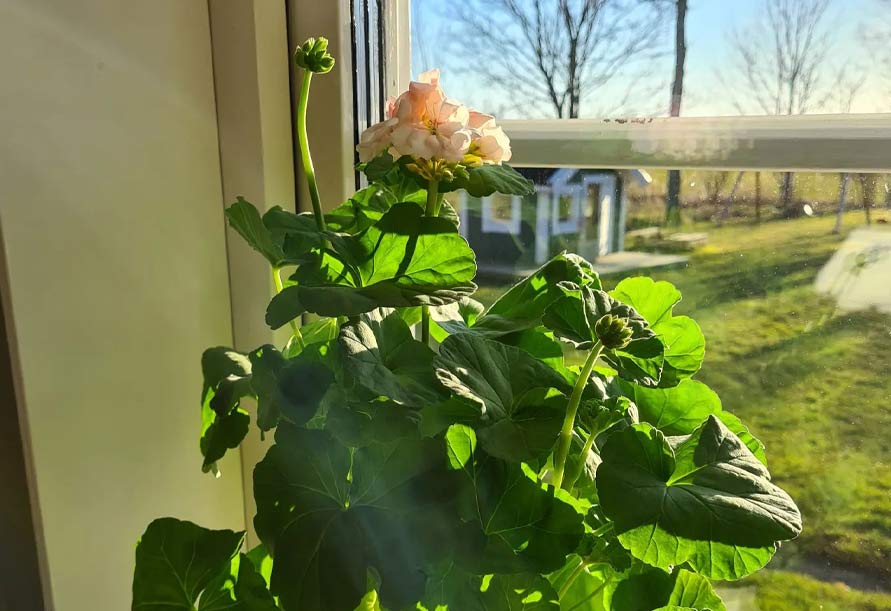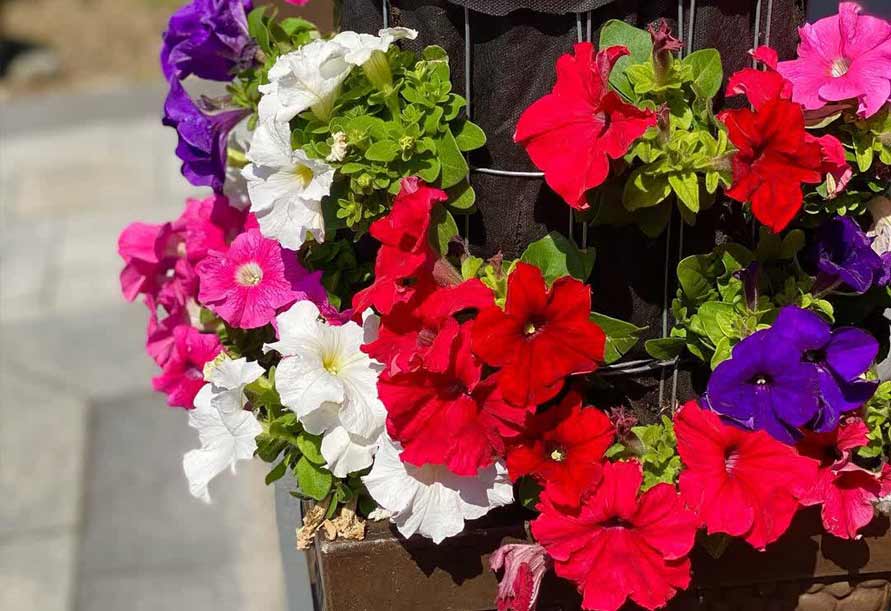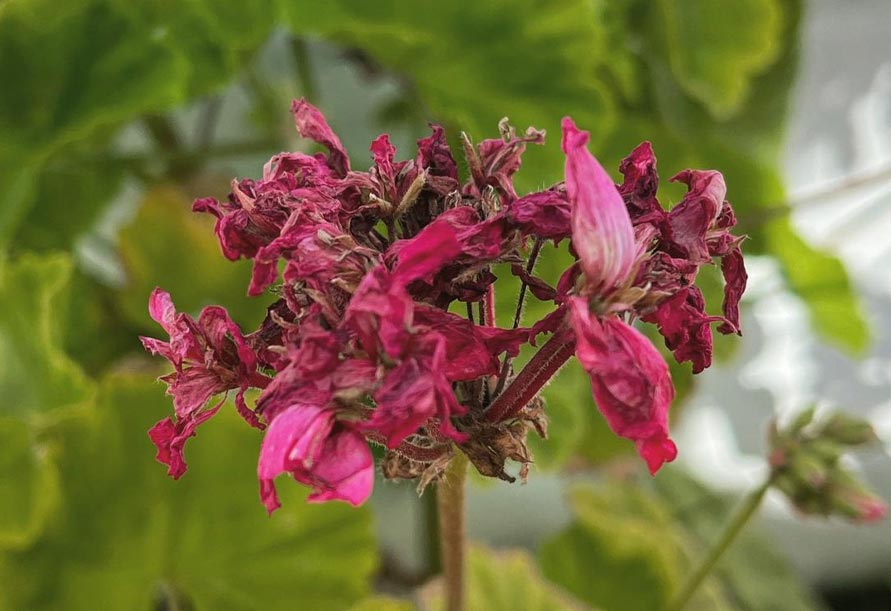Blog
Geraniums


geranium is one of the most common houseplants that has attracted much attention due to its beautiful appearance and suitable shelf life. This flower includes 200 different species, and in almost all traditional greenhouses, you can see an example of this beautiful family. Geranium grows well in indirect sunlight and is the best time for its flowers to bloom in summer. Growing geranium flowers is a relatively easy task, and you can keep this flower in your home according to a few simple but at the same time practical points. This article aims to acquaint you with the do and don’ts of keeping geranium flowers at home. Please read on with Alo Plant.
| Jan | Feb | Mar | Apr | May | Jun | Jul | Aug | Sep | Oct | Nov | Dec | |
|---|---|---|---|---|---|---|---|---|---|---|---|---|
| Sowing | ||||||||||||
| Harvesting |
| J | F | M | A | M | J | J | A | S | O | N | D | |
|---|---|---|---|---|---|---|---|---|---|---|---|---|
| Sowing | ||||||||||||
| Harvesting |
| Botanical Name | geraniums spp |
| Common Name | Geraniums, perennial geranium, wild geranium, cranesbill geranium, bloody geranium |
| Plant Type | Flowering perennial |
| Pet / Baby Safe | Pelargonium species is toxic for pets |
| Sun Exposure | Full sun to part shade |
| Hardiness Zones | 9 to 12 |
| Bloom Time | Spring, summer, fall |
| Soil Type | Medium moisture, well-drained |
| Soil Amendments | text here |
| Types of Fertilizer | text here |
| Flower Color | Blue, pink, purple, white |
| Plant Height | 6 to 24 inches tall |
| Native Area | Temperate regions worldwide, especially Mediterranean |
Learn more about geranium flowers

Geranium, scientifically known as pelargonium, is a flowering plant, and its primary origin is in tropical regions such as Africa and Australia. As mentioned, there are about 200 species of this flower worldwide that adapt to low room light and indirect sunlight. It should be noted that geraniums grown in the Americas, especially in the United States and Canada, belong to the pelargonium group. This genus of flowers has a high density and is known in different categories as the Pot plant. Regal, Ang, love leaves, zonal, aromatic leaves, unique are the types of geraniums that you can use at home and work.
The temperature required for storage of geranium
geranium grows at home temperature, and you will not have a problem with this. But if you want to reproduce and grow this flower more, you can keep this flower in the summer or open areas for a few hours a day. It would help if you were careful not to expose the geranium to cold weather, and when the night temperature drops below 13 degrees, it is best to move the geranium indoors.
The best night temperature in winter is between 13 and 16 degrees, but this plant can withstand temperatures between 0 and 27 degrees and survive. Of course, we can not expect good growth in this situation.
How to irrigate geranium flowers

In the case of geranium irrigation, the soil surface of the pot must dry between the two irrigations. Still, in the case of fragrant and creeping geranium, more water is needed, and the soil should be constantly moist. Geranium absorbs water after irrigation; For this reason, even if the amount of irrigation is more than it needs, it is absorbed by the plant, which can cause severe damage to the plant. Do not forget that when flowers are present on the plant, the need for irrigation increases. In winter, reduce watering to once a week. If you keep a geranium pot outdoors, be aware that it will need to be watered once a day on hot, windy days.
Soil suitable for storing geranium flowers

In short, suitable soil for geranium is garden soil—heavy soil with high density that prevents excessive airflow. You can add a bit of dry or rotted manure with sand to this soil. Different species of geranium If grown in pots, you should make sure that the potting soil is well-drained.
Is geranium a poisonous plant?
Geranium may be harmful to some pets, such as dogs and cats, and poison them. Therefore, it is better to keep this pot of geranium out of the reach of your pets at home.
Suitable light for storing geranium flowers

Depending on where you grow the geranium flowers, the plant will need light. In general, it can be said that geraniums adapt well to places with at least six to eight hours of moderate light and will have no problem growing.
Familiarity with the classification of geranium flowers

Pelargonium Regal
This species of geranium has perennial and evergreen shrubs and is considered by many people because of its beautiful appearance. The leaves of Pelargonium Regal have a circular shape, and sometimes their margins are serrated. You can see the petals of this species in light purple, pink, purple, or white colors in florists.
Pelargonium Regal can be planted outdoors or in pots, and there are no restrictions.
Pelargonium Angel
This type of geranium is very similar to Regal, and the difference is related to its leaves. Pelargonium Angel has denser leaves and is mainly derived from P. chrispum.
Pelargonium Ivy-leaf
These geraniums have a beautiful appearance with many petals, an eye-catching appearance, and are often kept in hanging baskets or pots. It should be noted that fertilizer and perlite need regular care and replacement for proper growth.
Pelargonium Scented leaved
These geraniums, like other species, can grow in all seasons and are often known for their fragrant leaves. The leaves or oil extracted from the leaves of this flower are used in the food or perfume industries. For this reason, Pelargonium Scented leaved is also called tea perfume plant.
Zonal pelargonium
These geraniums’ herbaceous and succulent structure is suitable for the tropics and is usually seen in simple flowers with five petals. Pelargonium zonal is generally used outdoors.
Methods of propagation of geranium flowers

Geranium propagation is usually done by sowing seeds and cuttings, which is more straightforward and common. The propagation of geranium is very simple but full of details. Details such as the time of geranium cuttings (spring to mid-autumn) and how to cut the cuttings and seeds great impact having a new and beautiful plant.
The main cause of geranium petal wilting.
Geranium wilting is most often caused by excessive heat in the air, which causes the plant to lose moisture. You can solve this problem by paying more attention to the plant on hot summer days and compensating for the plant’s water by irrigating. So be sure to check the soil moisture every few days and water it.
How to fertilize geranium flowers

Liquid fertilizers are the most common and most suitable nutrients for the geranium family due to their rapid absorption. It is necessary to use this fertilizer in the required amount. Because if you use the same amount of concentrates, you may end up burning your plant. Suppose you think the plant is grown in low-nutrient soil. In that case, you can use fertilizers that contain extra nutrients (such as calcium, magnesium, or sulfur), in addition to NPK (nitrogen, phosphorus, and potassium).
Common diseases of different species of geranium

Alternaria leaf disease
The disease produces nearly dark brown circles on geranium leaves, about half an inch in diameter. A yellow halo may also surround these spots. The use of fungicides is the most common treatment for this disease in different species of geranium. The disease is rapidly spread by wind or water spray on infected leaves and is more prevalent in hot climates.
Bacterial disease
The bacterial disease manifests itself in different ways. The disease can cause reddish-brown circles on the stems and leaves of geranium and gradually darken the petals. You may also see these yellow spots in different geographical areas. The bacterial disease has no cure, and the only possible way is to remove the infected plants.
Botrytis blight disease
Botrytis is another common disease among different species of the geranium family. Usually, one of the first parts of the flower to be affected by the disease is its flowers. In this way, the flowers turn brown or gray and suddenly begin to fall. To treat this disease, you can remove the stem of the damaged parts and destroy them. The use of fungicides in the early stages of the disease may also help reduce its spread.
Pelargonium rust disease
Unlike leaf spot and bacterial blight, which are similar and may be difficult to distinguish from each other, rust fungal disease is very easy to diagnose. In this disease, a reddish-brown layer covers the surface of the leaves and causes them to shrink over time. Removal of infected leaves and fungicides is the best way to treat and maintain these species.
Conclusion
With its beautiful appearance and various types, Geranium is always one of the attractive options for use in homes and apartments. This species is primarily found in tropical regions such as Africa and Australia and is a poisonous plant for pets and infants. Geranium has been used as a houseplant in many countries. You can breed and propagate them by knowing their maintenance systems, such as suitable ambient temperature, soil conditions, and suitable distances for irrigation. In this article, we wanted to give you reasonably comprehensive information on storing Geranium. If you have any questions or concerns about this issue, please contact us in the comments section.
RELATED POSTS













